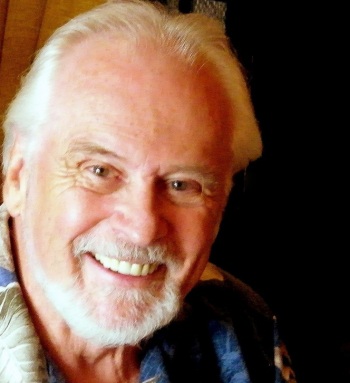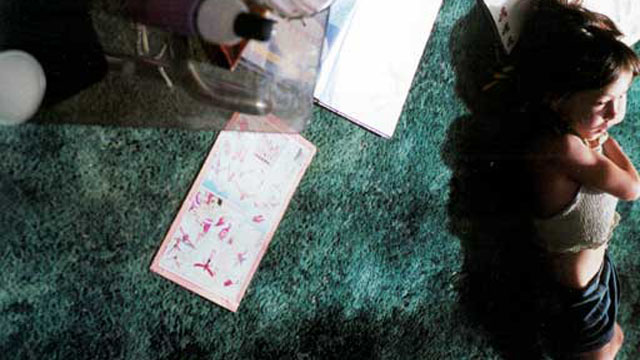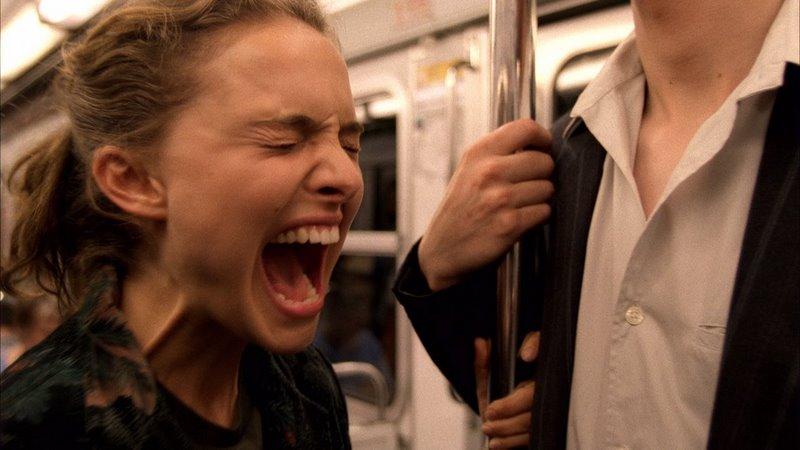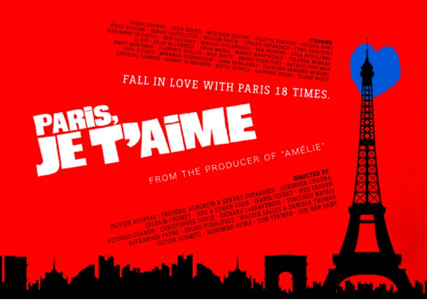Man is born a coward (L’homme est né poltron). — Joseph Conrad
It was the end of my plebe year at Annapolis. Fresh off the blade edge of ten brutal months of military indoctrination and relentless hazing, I had volunteered for the Army’s Airborne School in Ft. Benning, Georgia. A hundred of us were going, out of a thousand in my Naval Academy class. We were young men and women of a similar ilk, I suppose. We reasoned that if we could muster the guts to throw ourselves out of a perfectly good airplane five times and earn the coveted silver jump wings—the first of many ribbons and wings that we all dreamed of wearing—we would have passed some midterm on manhood. (I say “manhood” here because that was how it was framed then. We paid only lip service to the language of gender equality, even as women trained by my side.) Jump school represented a shortcut in a way, a tangible though terrifying transition, a leap not just from the belly of a healthy airplane, but also a leap from innocence to experience. A warrior’s test, we were told. As long as you could get out that fucking door and the parachute opened.
This was how I found myself stuffed into the cargo hold of a C-130 Hercules. No part of my nineteen-year-old self wanted to risk my life, yet there I sat, rumbling across a taxiway, a parachute strapped to my back, sardine-canned in with seventy other wannabe heroes, none of us knowing what we were doing.
The pragmatic definition of courage comes late in Webster’s hierarchy, at least in the dictionary I use. The first entries are all listed as obsolete: courage, 1. The heart as the seat of intelligence or feeling; 2. Inclination, intention; 3. A proud and angry temper; high spirit. The contemporary usage, found fourth in this dictionary, defines courage as the mental or moral strength enabling one to venture, persevere and withstand danger, fear or difficulty firmly and resolutely.
Courage descends from the French word for heart, coeur. Even the modern usage of the word retains an echo of its French origins. Courage, after all, exists somewhere south of the intellect. You can’t think your way into bravery. “Heroism feels and never reasons, and therefore is always right,” Emerson tells us. And while courage may share some chromosomes with instinct, it dwells a few rungs higher up the evolutionary ladder than the primitive fight or flight response. Courage also evokes a certain sensibility, an ennobling quality, the ‘moral strength’ aspect of the dictionary definition. We wouldn’t, in most cases, ascribe courage to a brute criminal, even one persevering in the face of danger.
But is courage a destination? Is a person courageous the same way he is, say, smart or beautiful? Can it be attained? At nineteen, strapped into the back of that airplane, I certainly believed this to be so. I needed to believe in its attainment. The alternative made a whole lot of military training and the last year of my life, not to mention the next ten minutes of it, feel unnecessary and cruel.
There was always the question. Do you have what it takes?
It haunted, that question did. It scrutinized. It seemed the only question that mattered then. Even before Annapolis, I’d been steeped in the mythology of courage. I was a Right Stuff kind of kid, home-schooled on the narratives of courage, maybe even constructing them as I grew. The more valiant the better: Audie Murphy, George Patton, Chuck Yeager, John Glenn. Long before I’d entered the Naval Academy, a place where such tales of valor found an academic and cultural imprimatur, I idolized the lives of the brave. At the same time, I wrestled with my own courage. Do you have what it takes? Comparing my meager life to that of my heroes, I certainly didn’t think so. But I had convinced myself that I might find it, perhaps just on the other side of that C-130 cargo door.
At twelve-hundred feet, the jumpmaster opened the door on the fuselage. Instinctively, all heads turned toward the sudden burst of light. Alabama pine forests rushed by. Red clay roads and green fields blurred past. Through the open door, wind whooshed into the sweltering cargo hold. Some seventy of us were pinned there, nauseated, silent, sweating, packed so tight that even scratching was an impossibility. Sanity and self-preservation shrank into the space between our backs and the parachutes strapped to them, while fear settled into a background hum, far beneath the noise of the plane’s four propellers, beneath the rushing air. All that remained was the choice: to walk through that open door or to face the opprobrium of bond breaking.
I had convinced myself that courage involved standing up, attaching the static line to the metal cable stretched across the cabin of that C-130, a line which would rip my parachute free when my body tumbled out of the plane. I told myself that this test, this shuffling back toward the open door as that awful plane bounced along humid convective currents, was going to prove something. That if I could do it, if I could somehow get out the door, I’d have started down my fear, once and for all.
Do you have what it takes? What if the answer was, however, simply no? What if the test was failed? What then? Does looking at the antonym of courage shed a brighter light on it? Can the cowardly act reveal truth?

When the cruise ship Costa Concordia slammed into a reef off the Italian coast last month, killing fifteen passengers (17 are still missing), the Italian captain abandoned his ship, saving himself and ignoring his duty. The captain was universally excoriated and declared a coward. And while such judgments seem wholly fair given the circumstances, they are also simplistic and unexamined. This man, after all, had spent most of his life at sea. Didn’t such a career speak to some degree of courage?
Perhaps better to turn back a century for some attempt at an answer.
The fictional events in Joseph Conrad’s novel Lord Jim bear a striking resemblance to the wreck of the Costa Concordia. Conrad’s fictional steamship, the Patna, is loaded with Arab pilgrims on their way to Mecca. Late one night on the open ocean, the Patna strikes an object and begins to take on water. Though the crowded ship appears to be sinking, no alarm is sounded. The unknowing pilgrims, many of them asleep on the open decks, are left to die. The captain and crew climb into a lifeboat and begin to lower it. The principal character in Conrad’s novel, a young mate named Jim, hesitates on deck. He knows that abandoning the passengers is reprehensible. He knows he has a choice. He can either leap into the lifeboat with the others or die an honorable death onboard the sinking ship. “Eight hundred people and seven boats—and no time. Just think of it,” Jim says. Through Marlow, the narrator (though not technically the point of view character in the novel), the reader experiences the excruciating details of the cowardly act.
The lifeboat is almost down to the sea’s surface. The crew shouts to Jim. “Jump! Oh, jump!” And, almost in spite of himself, Jim jumps into the boat saving himself from certain death, but also condemning himself to a life of inescapable shame.
After they are rescued, the other members of the crew invent a story about the ship’s sinking, though no one actually witnessed it go down. Jim remains silent, neither confirming the story nor denying it. All would be forgotten, the act erased, since no witnesses remain. But to the crew’s great dismay, the Patna has not sunk. When it is towed into port, with the bewildered and angry passengers on deck, a private shame suddenly becomes a public scandal. The rest of the crew scatters, but Jim insists on standing trial. He alone is prepared to face up to what he did.
Where Conrad’s interrogation of the idea of courage begins, however, is not inside these fictional courts and maritime communities. (Conrad’s imagined world is fully contemporary, mirroring our own hero-worship/scandal mongering media. Just ask Captain Schettino.) The real exploration goes on inside Jim’s mind. For what Conrad creates is at once a terrific yarn of a shipwreck and a meditation on courage.
We learn that Jim has spent a lifetime inventing his heroic double, a mythological version that has projected itself into great adventures, always resolute in the face of peril. But when the call comes, when the question is asked, Do you have what it takes? Jim fails. It’s in the aftermath of that failure where the story takes place. What follows Jim is as much a judgment on that spilt inside himself—between the starkly real person and the self-created but defeated mythological hero—as it is about any guilt he feels over abandoning a boatload of Arab pilgrims. For Jim, the cowardly act is more a betrayal of self than of some code or convention.
“Heroism is an obedience to a secret impulse of an individual’s character,” Emerson says. “Self-trust is the essence of heroism. It is the state of the soul at war; and its ultimate objects are the last defiance of falsehood and wrong.”
Jim’s true battle, his ‘last defiance of falsehood and wrong’, is a battle fought over imaginary heroism. What shatters is Jim’s heroic self-image. In this sense, Lord Jim tells the tale of the universal struggle for courage. For we all imagine ourselves as heroes on the stages of our own lives. We are all courageous unto ourselves, ready and waiting to answer that call. It is only when freed from that burdensome ideal of our created heroism, often through a shocking failure, like Jim‘s, that we can begin to grow in stature and strength. The stains on our character, Conrad seems to be telling us, are actually the strengths of it. We are our weaknesses. The courage to embrace that fact is perhaps the only lasting one we will find.
Cowardly Jim will go on in the course of the second half of the novel to become Lord Jim, ruler, hero and to no small extent, a brave man. Though always the heart of the coward remains beating below. Do you have what it takes? For Jim, no less for most of us, the question fuels the journey far more than any answer could.
Inside the plane that day, the unbearable heat and humidity added texture to terror. Beneath thick layers of camouflage uniforms and forty pounds of gear, my back dripped with sweat. As the first ‘stick’ of jumpers was given the order to “Stand Up!” a young soldier nearest the open door vomited into his lap. Suddenly mixed into the sweltering air along with jet fuel, parachute nylon and body odor was this new aroma, the acrid contents of Fear’s half-digested breakfast.
The first stick stood. Even the emetic one managed to stand. I watched him brush off his soiled uniform and hook up. The first jumpers stood crouched against the open door. A green light came on and the jumpmaster shouted. The first members of our Airborne class shuffled away and disappeared.
If I have witnessed a more uncanny sight than that of bodies falling out of an airplane in flight I don’t know what it is. One moment, a familiar face stands ten feet away inside the cargo hold and the next, he disappears out the door. It was the Rapture reversed, God’s chosen called not up toward paradise but sucked down toward hell.
Again and again, the cargo plane circled the drop zone. The next stick of jumpers stood, shuffled and was gone. After two more four-minute cycles, the number of warm bodies between me and that door had decreased by half.
When my turn came, on the fourth pass if memory serves, I stood on legs that nearly faltered. The command was bellowed, “Hook Up!” I attached my static line to the braided steel cable above my head. I checked my equipment and ran my gloved fingers across the parachute lines of the jumper ahead of me, checking for snares and tangles. I prayed that someone behind me was likewise checking the lines on my back. Another stick of jumpers went out that door as we stood there checking. They disappeared from the dimly lit cabin into the bright Alabama sky, a sight still eerie, but gradually becoming more familiar. By then, the plane was emptying fast.
For Jim, the journey toward some reckoning, toward a salvation of the lost hero, came on the distant island of Patsuan. There, his redeemed courage and romantic ideals of heroism would elevate him to the status of Tuan, or Lord. Jim is given another chance, as most of us are. “One does not die of it,” the character called the Frenchman tells Marlow. One does not die of fear. But when Emerson speaks of “the soul at war” it seems to me that the battleground often lies in the spaces between fear and courage. It is that tension, that pulling apart of the two sides, the imagined hero within and the fearful self. Courage, if it exists, must exist there, in accepting the flawed real over the idealized mythic.
I jumped that day. My chute opened and I landed intact in the drop zone. I threw myself out that door with little more than a second thought on the sanctity of my own life or on the consequences of risking it. Something else stands out: Everyone jumped that day. And the next, and the next. I know of not a single person who didn’t go out the door. In our entire class, not a single one of us refused the simple command to “Go!” That’s all it took, one simple word. A stranger shouting “Go!” and we went. We threw ourselves out that door. Once more unto the breach, dear friends, once more.
I thought wearing silver jump wings on my uniform would proclaim courage. I thought those wings would enable courage to become a steadier partner in my life. But it did not, of course, any more than a lack of wings proclaimed cowardice. Most of us who graduated from jump school probably felt this way, though we rarely betrayed such confidence, even with each other. Gallantry is not a destination. Courage is, at its best, most tenuous. One does not become courageous, anymore than one becomes loving. That question, Do you have what it takes? can never be finally answered. The interrogation remains ongoing. “Yes! Yes! One talks, one talks,” says the Frenchman to Marlow. “This is all very fine; but at the end of reckoning one is no cleverer than the next man—and no more brave.”
—Richard Farrell
———————————————————-
Richard Farrell is the Creative Non-Fiction Editor at upstreet and a Senior Editor at Numéro Cinq (in fact, he is one of the original group who helped found the site). A graduate of the U.S. Naval Academy, he has worked as a high school teacher, a defense contractor, and as a Navy pilot. He is a graduate from the MFA in Writing Program at Vermont College of Fine Arts. He is currently at work on a collection of short stories. His work, including memoir, craft essays, and book reviews, has published at Hunger Mountain and Numéro Cinq. He has a story forthcoming in the A Year in Ink anthology and his essay, “Accidental Pugilism” (which first appeared on Numéro Cinq in a slightly different form) has been nominated for a Pushcart Prize. He lives in San Diego with his wife and children.





































































